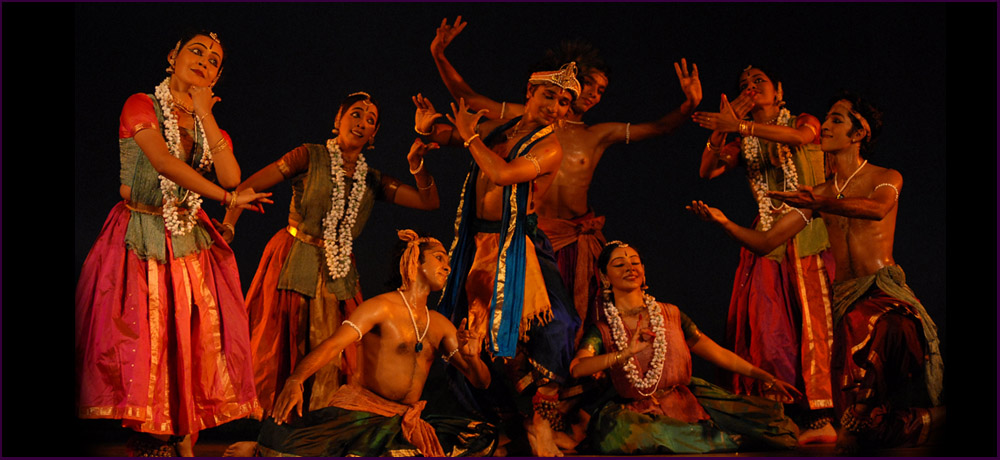

Wednesday, 10th
October 2012

Bharatanatyam
- Shijith Nambiar - Parvathy Menon and Group (Chennai)
| |
Shijith
Nambiar and Parvathy Menon, the Bharatanatyam duo, who have established
their presence in Chennai and abroad, are the young ambassadors
of Bharatanatyam in the true sense. They have voluntarily and successfully
undertaken the task of demonstrating the spiritual power of Bharatanatyam
through their expositions on various stages in India and abroad.
Unperturbed passion and dedication, and true adherence to tradition
make them unique and exemplary in their discipline. Shijith, a multifaceted
artiste, with exceptional choreographic skills and musical sense,
stormed the stage almost instantly after passing out of Kalakshetra,
the institution that inspired and nurtured the hidden talent in
him. Parvathy Menon, a post diploma holder from Kalakshetra, who
has proved her credibility through her performances with the Kalakshetra
repertory company in India and abroad, has demonstrated her maturity
in successfully contributing to Shijith Nambiar in his profession
as well as life. |
| |
Presentation The presentation begins with Spandana (Nandichol). The word Nandichollu refers to those syllables that originated from Nandi's mridangam. It is believed that Lord Shiva danced to those syllables when Nandi played his mridangam. The word spanda means pulse or vibration. Feel the vibrations of the mridangam and Shiva’s cosmic dance through this Nandichollu set to Khanda Jathi Thriputa Thalam. Next, the mood shifts to Sakhya. The very famous devarnama, Krishna Nee Begane Baro by Vysaraya Theerthar, has been interpreted by the choreographer in a way as to show Krishna’s friendship with his fellow gopas and his relationship with his foster mother, Yashoda. Complete surrender to Paramatma is what Radha and the gopis of Vrindavan teach us. The shringara that flows between Krishna and the gopis has been beautifully visualised by Maharaja Swati Tirunal in the composition, Chaliye Kunjan... The evening ends with Samagamam – a tillana through which the dancers try to explore the union between music and dance and how it takes us to the final realm of sheer bliss. |













